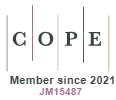Model TAM w badaniach poziomu akceptacji książki elektronicznej przez młodego czytelnika
DOI:
https://doi.org/10.18778/0860-7435.28.02Słowa kluczowe:
Model akceptacji technologii (TAM), Książka elektroniczna, Motywacje czytelniczeAbstrakt
Szybki, ale nierównomierny rozwój publikacji elektronicznych wywołuje pytanie badawcze o tempo ich przyszłego wzrostu, który zależy od poziomu akceptacji przez potencjalnych czytelników. Teoria innowacji wskazuje na istnienie progu masy krytycznej akceptacji produktów nowej technologii na poziomie 16% rynku. Po jego przekroczeniu dalsza dynamika wzrostu innowacji utrzymuje się samorzutnie. Na tej podstawie w referacie podjęto próbę tworzenia prognozy rozwoju wybranego rodzaju publikacji elektronicznej – książki elektronicznej w oparciu o opinie młodych czytelników (studentów). Ten kontekst spowodował silne ukierunkowanie badań na edukacyjne cele stosowania książki elektronicznej. Dla uzyskania informacji o intencji behawioralnej studentów w kierunku stosowania książki elektronicznej zastosowano narzędzie typu TAM (Technology Acceptance Model). W modelu przyjmuje się, że wykorzystanie nowej technologii może być wyjaśnione lub przewidywane przez określenie motywacji użytkownika, a ta z kolei jest pod bezpośrednim wpływem bodźców zewnętrznych, wynikających z rzeczywistych cech i możliwości technologii. Uwzględniony został czynnik odczuwanej przez badanych studentów łatwości użytkowania książki elektronicznej, który, jak się okazało, ma znaczący wpływ na postawę względem użytkowania, przy jednoczesnym silnym wpływie na postrzeganą użyteczność nowej technologii.
Pobrania
Bibliografia
Castells, Manuel (2008). Społeczeństwo sieci. Warszawa: Wydawnictwo Naukowe PWN.
Google Scholar
Chen, Shih-Chih, Li, Shing-Han & Li, Chien-Yi (2011). Recent related research in technology acceptance model: a literature review. Australian Journal of Business and Management Research, 1 (9), 124–127.
Google Scholar
Christensen, Clayton M. (1997). The innovator’s dilemma. Boston: Harvard Business School Press.
Google Scholar
Davis, Fred D. (1985). A technology acceptance model for empirically testing. New end-user information systems: theory and results. Cambridge: MIT Press.
Google Scholar
Davis, Fred D., Bagozzi, Richard P. & Warshaw, Paul R. (1989). User acceptance of computer technology: a comparison of two theoretical models. Management Sciences, 35 (8), 982–1003.
Google Scholar
Dillon, Andrew & Morris, Michael G. (1998). From “can they” to “will they?”: extending usability evaluation to address acceptance. In: Hoadley, E., Benbasat, I. (red.), Proceedings Americas Conference on Information Systems (AMCIS). Baltimore: University of Baltimore.
Google Scholar
Fishbein, Martin & Ajzen, Icek (1975). Belief, attitude, intention and behavior: an introduction to theory and research. Reading: Addison-Wesley.
Google Scholar
Fishbein, Martin & Ajzen, Icek (2010). Predicting and changing behavior: the reasoned action approach. New York: Psychology Press.
Google Scholar
Foster, Richard & Kaplan, Sarah (2001). Creative destruction. New York: Random House Inc.
Google Scholar
Kotuła, Sebastian (2013). Komunikacja bibliologiczna wobec World Wide Web. Lublin: Wydawnictwo UMCS.
Google Scholar
Lee, Younghwa, Kozar, Kenneth & Larsen, Kai (2003). The Technology Acceptance Model: past, present and future. Communications of AIS, 12, 1, 752-780.
Google Scholar
Moore, Geoffrey A. (1991). Crossing the chasm: marketing and selling high-tech products to mainstream customers. New York: Harper Business.
Google Scholar
Narojczyk, Krzysztof (2005). Dokument elektroniczny i jego opis bibliograficzny w publikacjach humanistycznych. Olsztyn: Wydawnictwo UWM.
Google Scholar
Nolan, Richard L. & Croson, David C. (1995). Creative destruction: a six-stage process for transforming the organization. Boston: Harvard Business School Press.
Google Scholar
Pearlson, Keri E. & Saunders, Carol S. (2006). Managing and using information systems: a strategic approach. New York: Wiley & Sons.
Google Scholar
Pietrasiński, Zbigniew (1971). Ogólne i psychologiczne zagadnienia innowacji. Warszawa: Państwowe Wydawnictwo Naukowe.
Google Scholar
Reykowski, Janusz (1982). Emocje i motywacja. W: Tomaszewski, T. (red.), Psychologia. Warszawa: Państwowe Wydawnictwo Naukowe.
Google Scholar
Rogers, Everett M. (2003). Diffusion of innovations. 5th Edition. New York: Simon & Schuster. ISBN 978-0-7432- 5823-4.
Google Scholar
Schumpeter, Joseph (1960). Teoria rozwoju gospodarczego. Warszawa: Państwowe Wydawnictwo Naukowe.
Google Scholar
Schumpeter, Joseph (1995). Kapitalizm, socjalizm, demokracja. Warszawa: Wydawnictwo Naukowe PWN.
Google Scholar
Shroff, Ronnie H., Deneen, Christopher C. & Ng, Eugenia M. W. (2011). Analysis of the technology acceptance model in examining students’ behavioural intention to use an e-portfolio system. Australasian Journal of Educational Technology. 27, 4, 600–618.
Google Scholar
Teo, Timothy & Van Schaik, Paul (2009). Understanding technology acceptance in preservice teachers: a structural-equation modeling approach The Asia-Pacific Education Researcher, 18, 1, 47–66.
Google Scholar
Zając, Michał (2013). Aplikacje książkowe dla dzieci młodszych: między książką a grą komputerową. Ars Educandi, 10, 63–70.
Google Scholar
Pobrania
Opublikowane
Jak cytować
Numer
Dział
Licencja

Utwór dostępny jest na licencji Creative Commons Uznanie autorstwa – Użycie niekomercyjne – Bez utworów zależnych 4.0 Międzynarodowe.










